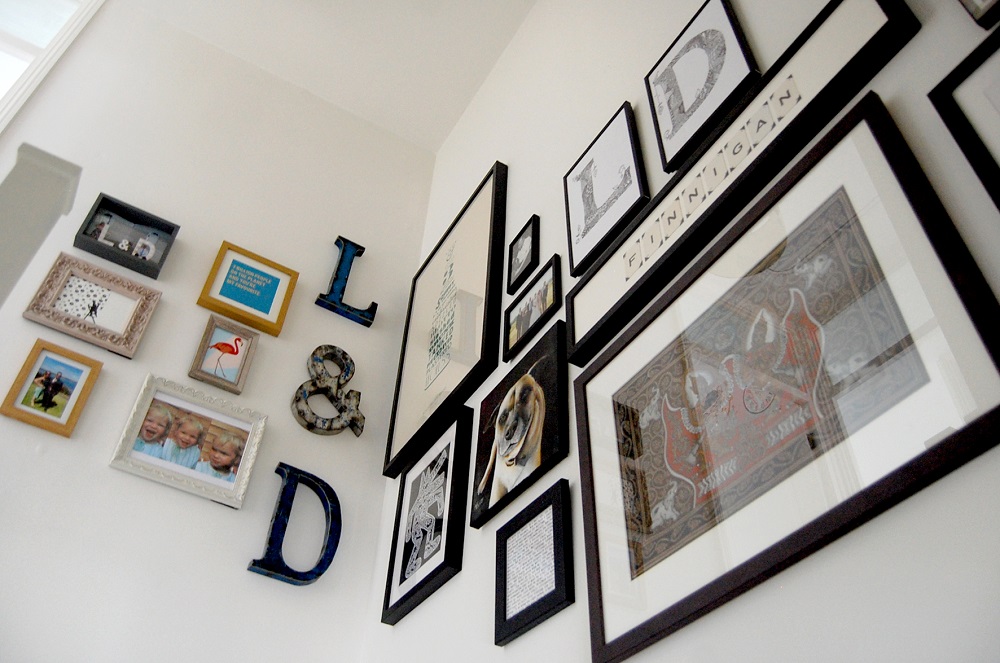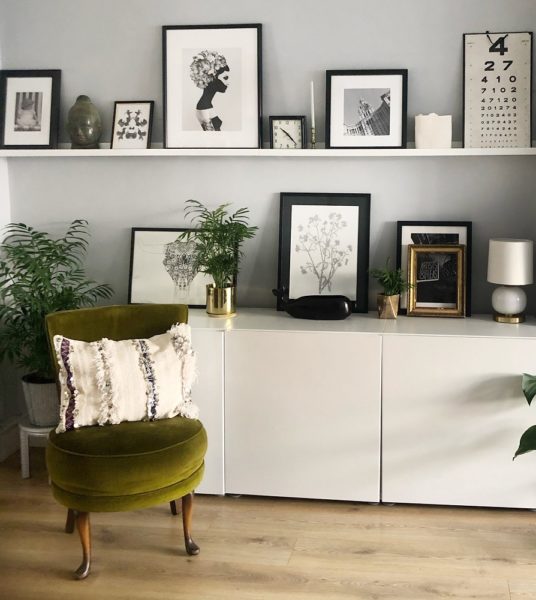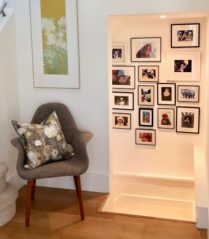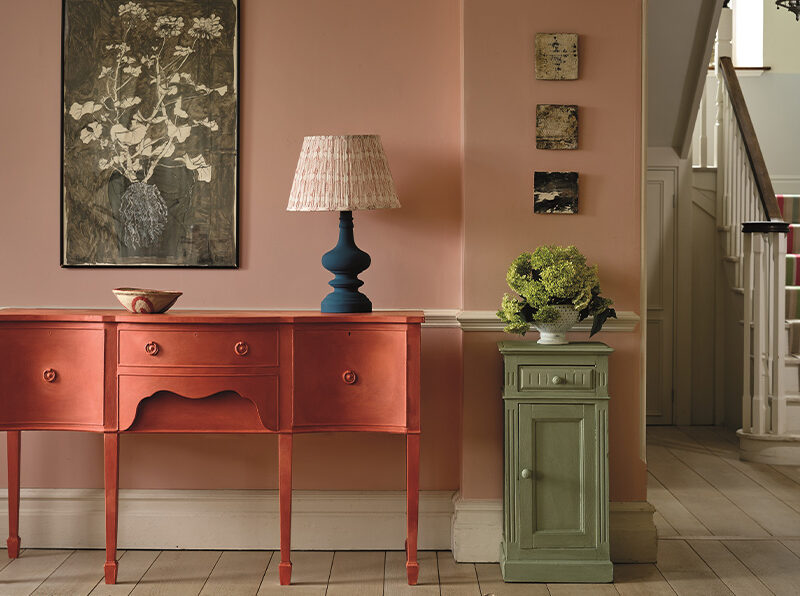
How to create a Gallery Wall
How to create a gallery wall
Interior designer Ellie Blott gives inspiration on how to create a gallery wall in your home to spruce up a tired space
Eyeing up that the vast expanse of space above your sofa? Or perhaps that vacant wall in the guest bathroom is looking a little sombre? We all have those pockets of blank canvas lurking around the home, just waiting to be spruced up with a new design.
Our advice? Put aside the temptation to drizzle the house sporadically with frames that lead the eye restlessly from room to room and go for a gallery wall instead. This statement feature can wake up any space, creating a focal point that draws attention inwards, leaving a lasting impression.

Jackie Hoyte, Decorbuddi
Planning Your Concept
A gallery wall can take many different manifestations, so it is important to start by planning out a specific concept. From classic collections of fine art in antique frames, to chic black and white photographs, there are many different avenues you can take. Finding a singular theme that is tailored to your taste keeps the wall looking sleek and put together.
Use the location of the gallery to guide your concept. An understated cloakroom could use a jazzy mirage of mixed medias, whilst a private bedroom might take a more personal approach. Spoilt for choice, try thinking about the specific style of your home when selecting a theme. Keep it in the forefront of your mind throughout the entire process.
Collecting Materials
You need not go far to source inspiration for materials. To save yourself the expense of purchasing something new, look to use what you already have. Frame that stack of glossy magazines that has been creeping higher and higher on your bedroom floor, dust off those old albums with family photos hidden within, or perhaps find a sneaky way to stylishly integrate your daughter’s ‘contemporary art’ into your collection of modern paintings. Make the wall as minimal or as eclectic as you like, pulling different mediums together to create a variation of texture and depth.
When making your final selection, try to limit either the colour palette, medium or style of the pieces chosen. This will keep the wall looking unified and draw all the separate elements into a singular compelling portfolio.
Remember to keep your theme in mind, as there is no one set of rules that fits every space. For still life drawings that have been contrasted with frames of pressed flowers, keeping to a minimal colour scheme of gold and green brings the two separate components together to create a fresh design on a conservatory wall. On the flip side, the clashing colours from a collection of record covers brings pizzazz to a muted living room.
Arranging the Gallery Wall
Once you have your materials collected, the final assembly will transform these individual elements into the show-stopping finale. Use the shape of the wall to choose the formation that suits the canvas best – be it a square, rectangle, stair-like zigzag, or an explosion of frames that expand out from the centre. Using the space to guide your arrangement will ensure that the gallery complements the room.
Plan out your formation before you begin to attack the wall. Lay the pieces out on the floor first to settle on your shape. Then map out a preliminary design on the wall with something less permanent, such as Blue Tac. This allows you to move pieces freely around and experiment with different layouts before committing completely.
Fixing in the Formation
To create an asymmetric design that still looks put together, use masking tape and a spirit level to create a base line in the centre of your arrangement. Expand outwards from the line, by adding frames above and below. Keeping the line straight is crucial to a polished finish, so consider enlisting a professional picture-hanger to assist with this part.
For a circular formation, place a dominant frame in the centre and rotate around the focal point, spiraling outwards. This will create a dynamic swirl that draws the eye inwards.
If you wish to avoid the commitment of hanging the pieces, contemplate the flexibility of shelves. Once assembled against the wall, frames can be filed along the shelves. This creates a no-strings attached gallery, as artworks can be interchanged as little or as often as desired.
Installing the frames lower than you may have originally anticipated can also help to create more impact. Having the gallery at eye level invites the viewer to consume more of the scene at one time. Consider the context in which the frames may be viewed. If the frames are creeping up a stair, perhaps stagger them in the same direction as the steps. For a seated position on a sofa, the gallery would be best viewed from a lower level.
Use the gallery wall to transform your space from a museum of fleeting moments into an impactful statement and use the wall as an opportunity to showcase your personality. Curating that final collection can be challenging and time-consuming, so do also consider enlisting one of our Buddies, who would be more than happy to help.
By Ellie Blott, Decorbuddi,
MORE HOME AND GARDEN FEATURES
CONNECT YOUR INDOOR AND OUTDOOR SPACE







